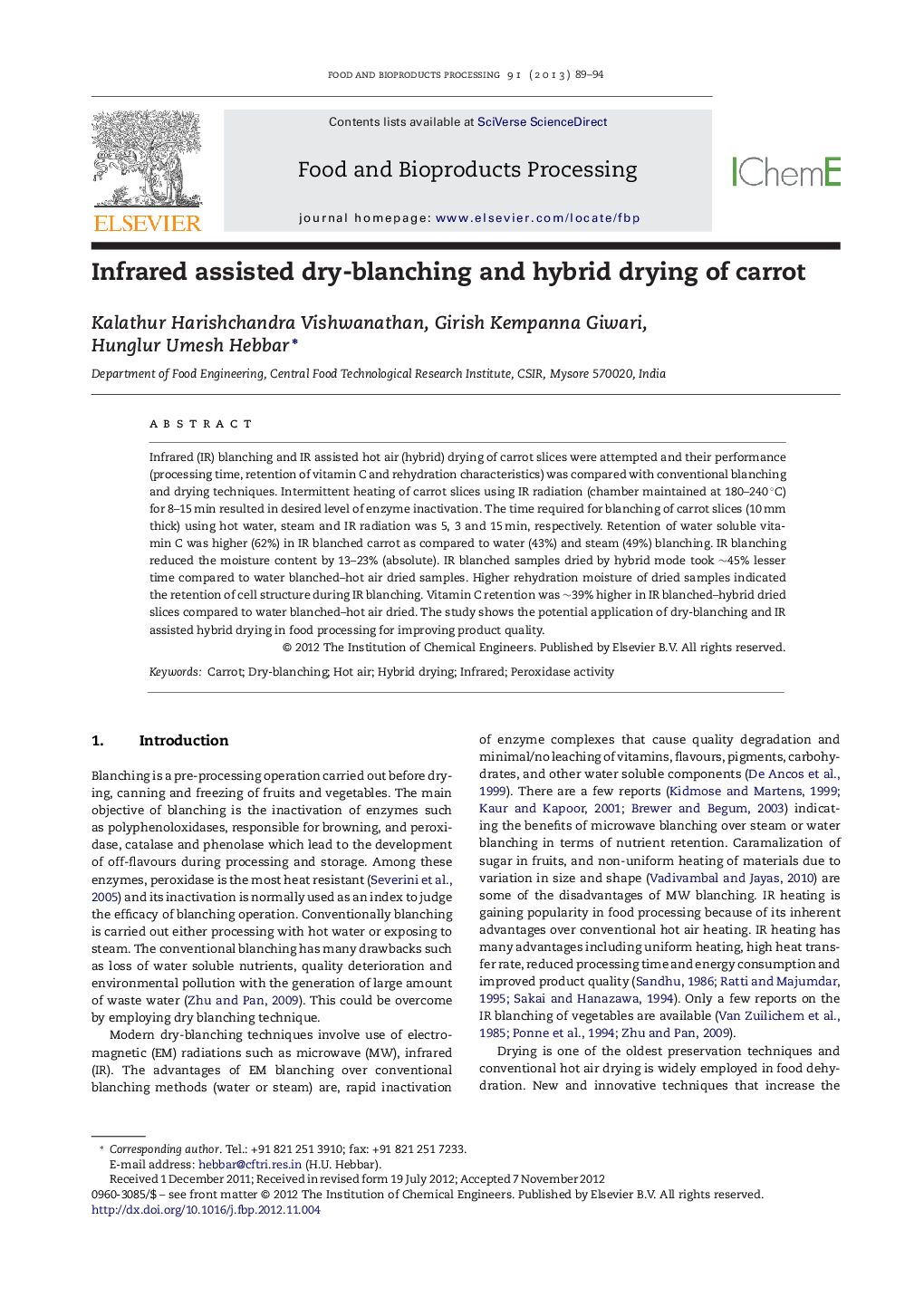| Article ID | Journal | Published Year | Pages | File Type |
|---|---|---|---|---|
| 19287 | Food and Bioproducts Processing | 2013 | 6 Pages |
Infrared (IR) blanching and IR assisted hot air (hybrid) drying of carrot slices were attempted and their performance (processing time, retention of vitamin C and rehydration characteristics) was compared with conventional blanching and drying techniques. Intermittent heating of carrot slices using IR radiation (chamber maintained at 180–240 °C) for 8–15 min resulted in desired level of enzyme inactivation. The time required for blanching of carrot slices (10 mm thick) using hot water, steam and IR radiation was 5, 3 and 15 min, respectively. Retention of water soluble vitamin C was higher (62%) in IR blanched carrot as compared to water (43%) and steam (49%) blanching. IR blanching reduced the moisture content by 13–23% (absolute). IR blanched samples dried by hybrid mode took ∼45% lesser time compared to water blanched–hot air dried samples. Higher rehydration moisture of dried samples indicated the retention of cell structure during IR blanching. Vitamin C retention was ∼39% higher in IR blanched–hybrid dried slices compared to water blanched–hot air dried. The study shows the potential application of dry-blanching and IR assisted hybrid drying in food processing for improving product quality.
► IR dry blanching was effective in inactivation peroxidase enzyme. ► Retention of water soluble micro nutrient vitamin C was high in dry blanching. ► Dry blanching eliminates generation of waste water (liquid effluent). ► Combining dry blanching and IR assisted hybrid drying reduced the drying time and produced better product quality. ► Combination of dry blanching and hybrid drying simplifies the overall process, as both could be done in a single unit.
